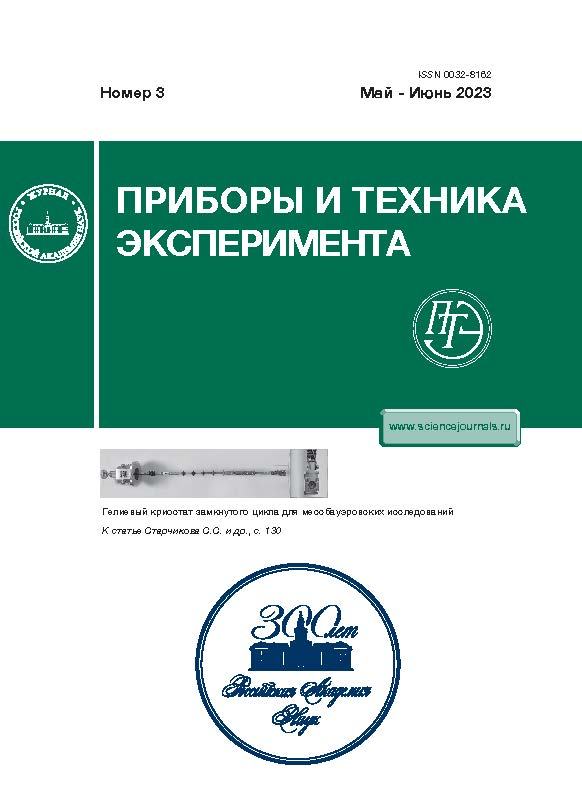Simulation of the Antineutrino Detector for the Second Neutrino Laboratory at the SM-3 Reactor
- 作者: Fomin A.K.1, Serebrov A.P.1
-
隶属关系:
- Petersburg Nuclear Physics Institute, named by B.P. Konstantinov of National Research Centre Kurchatov Institute
- 期: 编号 3 (2023)
- 页面: 9-16
- 栏目: ТЕХНИКА ЯДЕРНОГО ЭКСПЕРИМЕНТА
- URL: https://freezetech.ru/0032-8162/article/view/670504
- DOI: https://doi.org/10.31857/S0032816223020179
- EDN: https://elibrary.ru/GTCCFD
- ID: 670504
如何引用文章
详细
An experiment aimed at searching for a sterile neutrino using a new detector of the second neutrino laboratory at the SM-3 reactor (Dimitrovgrad, Russia) has been simulated. This detector is a scintillation detector of reactor antineutrinos with a multisection structure and horizontal arrangement of sections. Distributions of counts from prompt and delayed signals, as well as the dependence of detector efficiency on the selected thresholds, have been obtained by simulation. The antineutrino flux has been simulated with an allowance for the dimensions of the reactor core and its spatial location with respect to the detector. This simulation has been used as a basis to calculate the effect that should be obtained by measurements for the specified parameters of oscillations and energy resolution of the detector.
作者简介
A. Fomin
Petersburg Nuclear Physics Institute, named by B.P. Konstantinov of National Research Centre Kurchatov Institute
Email: fomin_ak@pnpi.nrcki.ru
Leningrad oblast, 188300, Gatchina, Russia
A. Serebrov
Petersburg Nuclear Physics Institute, named by B.P. Konstantinov of National Research Centre Kurchatov Institute
编辑信件的主要联系方式.
Email: fomin_ak@pnpi.nrcki.ru
Leningrad oblast, 188300, Gatchina, Russia
参考
- LSND Collaboration. Aguilar A. et al. // Phys. Rev. D. 2001. V. 64. P. 112007. https://doi.org/10.1103/PhysRevD.64.112007
- MiniBooNE Collaboration. Aguilar-Arevalo A.A. et al. // Phys. Rev. Letters. 2018. V. 121. P. 221801. https://doi.org/10.1103/PhysRevLett.121.221801
- Mention G., Fechner M., Lasserre Th., Mueller Th.A., Lhuillier D., Cribier M., Letourneau A. // Phys. Rev. D. 2011. V. 83. P. 073006. https://doi.org/10.1103/PhysRevD.83.073006
- GALLEX Collaboration. Hampel W. et al. // Phys. Letters B. 1998. V. 420. P. 114. https://doi.org/10.1016/S0370-2693(97)01562-1
- SAGE Collaboration. Abdurashitov J. et al. // Phys. Rev. C. 1999. V. 59. P. 2246. https://doi.org/10.1103/PhysRevC.59.2246
- BEST Collaboration. Barinov V.V. et al. // Phys. Rev. C. 2022. V. 105. P. 065502. https://doi.org/10.1103/PhysRevC.105.065502
- Serebrov A.P., Samoilov R.M., Ivochkin V.G., Fomin A.K., Zinoviev V.G., Neustroev P.V., Golovtsov V.L., Volkov S.S., Chernyj A.V., Zherebtsov O.M., Chaikovskii M.E., Petelin A.L., Izhutov A.L., Tuzov A.A., Sazontov S.A. et al. // Phys. Rev. D. 2021. V. 104. P. 032003. https://doi.org/10.1103/PhysRevD.104.032003
- Neutrino-4 Collaboration. Samoilov R.M. et al. // LXXI International conference “NUCLEUS–2021. Nuclear physics and elementary particle physics. Nuclear physics technologiesˮ. St.Petersburg, September 20−25, 2021. https://indico.cern.ch/event/1012633/contributions/ 4480300/attachments/2315193/3940949/Samoilov_ neutrino-4_nucleus21.pdf
- Alekseev I., Belov V., Brudanin V., Danilov M., Egorov V., Filosofov D., Fomina M., Hons Z., Kazartsev S., Kobyakin A., Kuznetsov A., Machikhiliyan I., Medvedev D., Nesterov V., Olshevsky A. et al. // Phys. Lett. B. 2018. V. 787. P. 56. https://doi.org/10.1016/j.physletb.2018.10.038
- NEOS Collaboration. Ko Y.J. et al. // Phys. Rev. Lett. 2017. V. 118. P. 121802. https://doi.org/10.1103/PhysRevLett.118.121802
- PROSPECT Collaboration. Andriamirado M. et al. // Phys. Rev. D. 2021. V. 103. P. 032001. https://doi.org/10.1103/PhysRevD.103.032001
- STEREO Collaboration. Almazán H. et al. // Phys. Rev. D. 2020. V. 102. P. 052002. https://doi.org/10.1103/PhysRevD.102.052002
补充文件
















